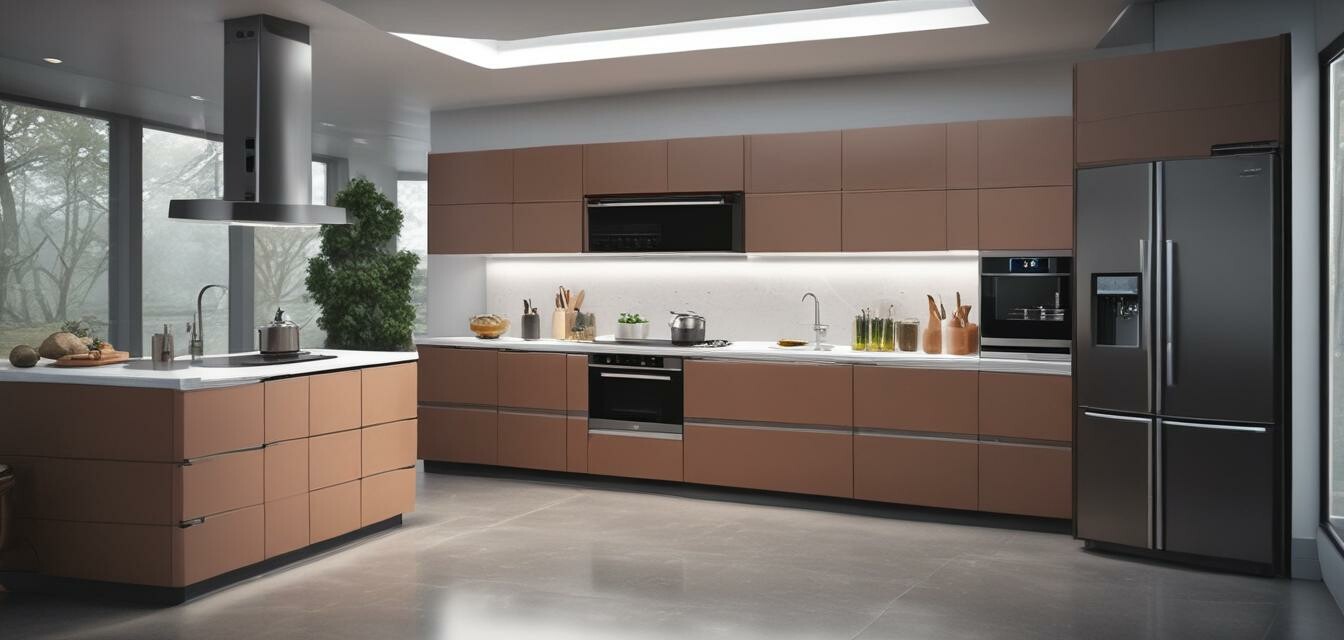
The Future of Cooking: Trends in Smart Kitchen Tech
Key Takeaways
- Smart appliances are increasingly integrating with home automation systems.
- Energy efficiency is a key trend in the development of kitchen technology.
- Bluetooth-enabled devices are enhancing convenience and ease of use.
- Touchless technology is gaining popularity for hygiene and convenience.
- Induction cooktops are taking the lead in safe and efficient cooking methods.
The kitchen has long been the heart of the home, and with the rise of smart technology, it is transforming into a hub of innovation and convenience. As we look towards the future, several key trends are emerging that shape how we cook and interact with our appliances. This article explores these trends and gives you insights into the exciting developments in smart kitchen technology.
Emergence of smart kitchen appliances
Smart kitchen appliances are designed to make cooking easier and more efficient. These devices connect to your home Wi-Fi network, allowing users to monitor and control them remotely through smartphones and smart home systems. Key trends in smart kitchen appliances include:
- Integration with voice assistants for hands-free operation.
- Real-time notifications and alerts sent directly to your device.
- Personalized cooking experiences based on user preferences.
Popular smart kitchen devices
Here are some common categories of smart kitchen devices you'll encounter:
| Device Type | Features | Benefits |
|---|---|---|
| Smart Ovens | Remote control, recipe integration, and self-cleaning features | Convenience and enhanced cooking precision |
| Touchless Faucets | Sensor activation and temperature control | Improved hygiene and water efficiency |
| Induction Cooktops | Fast heating and energy efficiency | Safety through no open flames and precise temperature control |
Energy efficiency and sustainability
As the global focus on sustainability grows, energy-efficient appliances are set to dominate kitchen technology. Manufacturers are designing products that reduce energy consumption while maintaining high performance. Key features often include:
- Energy Star certification for appliances.
- Smart energy management systems to monitor usage.
- Eco-friendly materials and minimal packaging.
For more insights on energy-efficient appliances, check out our Energy Efficient Appliances page.
Bluetooth technology in the kitchen
Bluetooth-enabled devices are reshaping how users interact with their kitchen appliances. These innovations enhance convenience by allowing users to:
- Control appliances from their smartphones.
- Receive alerts when food is ready.
- Sync recipes with cooking appliances for automated settings.
The integration of Bluetooth technology not only makes cooking more convenient but also offers opportunities for multitasking in today’s busy lifestyle. For more innovative ideas, visit our Smart Kitchen Tips section.
Increase in touchless tech
Touchless technology is becoming increasingly popular in kitchen appliances for its hygiene benefits and ease of use. This includes:
- Motion-activated faucets that allow for hands-free operation.
- Smart dispensers that provide liquid without physical contact.
- Voice-activated appliances for ease of access while cooking.
To explore the advantages of touchless gadgets, check out our Touchless Faucets page.
Future outlook of smart kitchens
As technology progresses, the future of smart kitchens looks promising. Innovations such as AI-driven cooking assistants, customizable cooking settings, and augmented reality interfaces are on the horizon. These advancements can:
- Make cooking an enjoyable experience.
- Help users make informed food choices.
- Streamline meal prep with automated functionalities.
Conclusion
The landscape of kitchen technology is evolving rapidly, making it essential for homeowners and cooking enthusiasts to stay informed about these trends. By adopting smart kitchens, you can enjoy a more efficient, sustainable, and hygienic cooking experience. For the latest updates on emerging trends in kitchen technology, visit our News and Trends section.
Pros
- Enhanced convenience and efficiency in cooking.
- Improved safety features in appliances.
- Potential for energy savings.
- Hygienic touchless options.
Cons
- Initial investment can be high.
- Dependency on technology and connectivity.
- Potential issues with software updates and maintenance.